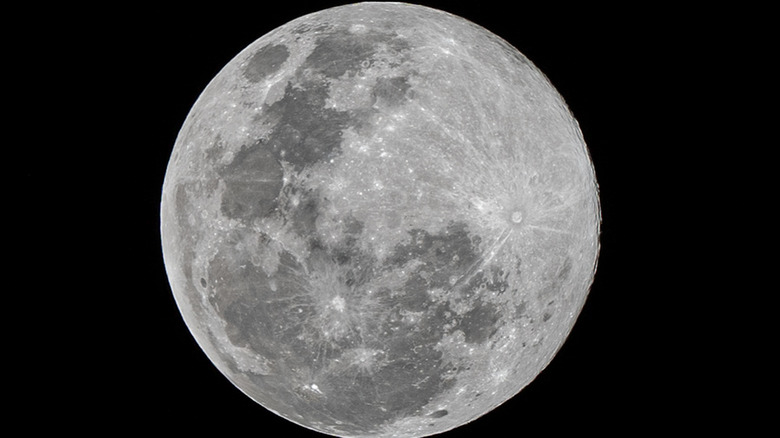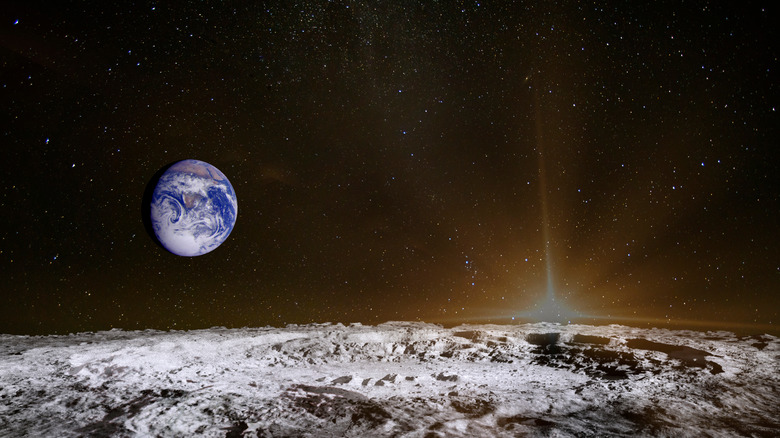The Interesting Truth About Lunar Cataclysm
When we try to look at things that have impacted the Earth over the course of its 4.54 billion years (according to Space), it can be very hard. Yes, we have large craters from certain meteorological events, but our home planet is also constantly changing, with plate tectonics and volcanic activity, via National Geographic. So things often look very different from they did way back when.
There is a resource that we can use to get an idea of what happened, though. It's our moon. Since there is no water running on it or any winds to move things around, it does a really good job of preserving those impacts. And it seems that there was a time, billions of years ago, when it was being hit ... a lot. This is called the Lunar Cataclysm.
Per Planetary Science Research Discoveries, scientists think that there was one 50-million-year period of time (which seems like a LONG time compared to our comparatively short life spans, but is relatively narrow compared to the actual age of the universe) when the moon was pummeled by meteorites, some of them quite large. The signs of these are in the craters that dot the lunar surface.
The moon has many impact scars
This way of thinking started when the Apollo astronauts came back to Earth with some moon rocks, via NASA. When scientists examined them, they found that these rocks had been heated up about 3.9 billion years ago. This would be likely from the impact of things like comets that struck the moon.
It wasn't just the moon rocks, though, according to Lunar Science and Exploration. People were finding meteorites that were almost identical to what the astronauts brought back. These could have been things that were floating from those initial impacts and finally made their way to Earth. The thing that seems to drive this hypothesis is that when the scientists studied all the meteorites, none of them were older than 3.9 billion years. That would mean that they likely all came from the same place at around the same time.
Of course, making more trips to the moon to gather evidence would go a very long way toward determining if this was really what happened. The main thing that needs to be done is to figure out how to get to other parts of the moon without sacrificing the ability to communicate back with Earth if something should go awry.
Hopefully, these missions will help us learn more about what happened back then and what it was like when our planet and moon first formed. It will be an important piece of a puzzle to complete our understanding of Earth's history.

